To answer questions about past and future of USN and the relationship between fleet size and budget - data from publications by Congressional Research Service, Department of the Navy and my own work from various sources.
SDF has limit of images per post so I combined the tables and graphs together topically. Apologies for the size of the images but smaller would not be legible.
1. Fleet size
Source: Congressional Research Service
- Top left and bottom left is a compilation of fleet structure plans from 1980 to 2015
- Top right is total number of "battle force" which includes combat ships and select number of logistical and auxiliary vessels. The composition of "battle force" changes with time but not in any major way
- Bottom right is the number of new ships commissioned every year between 1982 and 2024
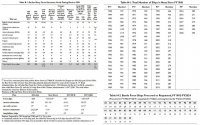
Compare fleet structure plans with ship levels in historic tables below.
2. Historic and projected ship levels
Source: Department of the Navy
Projected levels: per the 30-year shipbuilding plan from December 2020
Historic:
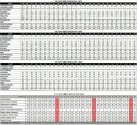
Large Surface Combatant - CG and DDG. Small Surface Combatant - LCS and FFG. Amphibious ships include LAW (Light Amphibious Warship).
No significant increase in SSN numbers until 2035(!) with minimum in 2026 (!). No significant increase in small surface combatants, amphibious ships, logistical ships until 2032.
3. Navy fleet and aviation inventory and procurement
Source: DoN Budget Office
- Top left inventory of ships included in "battle force"
- Bottom left approved and projected funding for ship procurement 2018-2026
- Top right inventory of Primary Active aircraft under DoN.
- Bottom right aircraft procurement 2019-2024
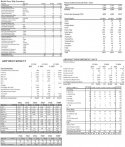 The procurement data above refers to ordered, not commissioned, ships. It also shows that USN maintains a stable output of 2 SSNs and DDGs per annum on average. The only greater number comes from new FFGs of which 20 are to be built by 2030. Absolute priority is given to the new SSBN and Columbias will largely block any other major shipbuilding program - including increase in SSNs - until the end of this decade.
The procurement data above refers to ordered, not commissioned, ships. It also shows that USN maintains a stable output of 2 SSNs and DDGs per annum on average. The only greater number comes from new FFGs of which 20 are to be built by 2030. Absolute priority is given to the new SSBN and Columbias will largely block any other major shipbuilding program - including increase in SSNs - until the end of this decade.
Note the size of aviation - it is a problem as much as it is an asset depending on the circumstances. More below:
4. Details of 2020 DoN Budget
Source: DoN Budget Office
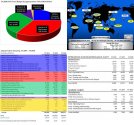
The cost levels associated with naval aviation are so large that any expansion in naval assets is made impossible. Any cut to existing fleet of capital ships disables costly aviation assets which constitute primary offensive force of USN. Most operational flexibility in USN is provided by aviation which requires capital assets with escorts. Because of that USN is "big guns or nothing" kind of navy and that means it is limited in its options - especially as money becomes a problem.
5. Historic economic trends enabling naval power projection
Source: Wikipedia, World Bank, DoN Budget Office, DoN Board of Inspection and Survey (InSurv)
- Top - table global currency reserve composition
- Below - 1960-2020 trendline comparing US and PRC military spending in relation to GDP
- Bottom left - funding for procurement 2022-2026
- Bottom right - scores by InSurv for 2014-2019 and projected sustainment costs for 2022-2051
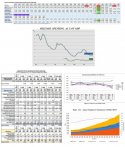
Here I direct your attention to the topmost table and the historic ship levels in image 2. During WW2 the production of ships was financed by loans which were paid off through monetary expansion under Bretton Woods system (1944-1971) with US dollar as the only gold-denominated currency. This combined with higher military spending (see graph) allowed to finance major armament programs like "41 for freedom" or nuclear submarine and carrier fleets - on top of the Vietnam War. However the financial crash resulting from the collapse of Bretton Woods and floating of the US dollar forced a 50% cut in military spending. This is where you can see the capital flight toward German Mark and Japanese Yen as well as the slow resurgence of European financial markets. Less demand for USD means less purchasing power from newly printed money.
Reagan's buildup and "countering Soviets" was directed not against the USSR but against the Western European nations - much like currently the US is the main destabilizing force in the EU to weaken the bloc and the Euro. Reagan's expansion funded by deficit spending (with tax cuts!) increased tension , disrupted energy trade between Europe and USSR and forced agreements for "stabilizing" of financial markets which aimed at propping up of USD. In 1990 US Dollar constituted only 47% of global reserves and European financial markets provided 35% reserves. Along with 9,5% from Japan it essentially matched US position. Compare it with 1975. (And while you're at it see when exactly Britain loses its status - when it's out of "special" money from BW)
The Gulf War and Iraq wars were aimed at enforcing the "petrodollar" - a system of de facto oil standard which used established energy markets denominated in USD as sink for USD demand. The US destabilized the Middle East and told every country that either you maintain USD-only trade or you're on your own in the world's most unstable (thanks to the US) region. This blackmail worked (and countries that didn't agree were invaded in 2003 and 2011) and allowed for continuing monetary expansion until 2008 but the losses of naval strength from the cuts in the 70s and 90s could not be recouped. You can see yourself that even with the current unsustainable level of military spending the USN is barely keeping even with declining readines (InSurv) and ship levels.
While deficit spending in the 80s which increased military expenditures modernized the fleet the deficit spending in the 2000s was wasted on wars.
Without money there is no navy. Without navy the sun sets over the empire rather quickly.
Replies:
The thing which changed everything happened just several years ago - we're talking about China launched its crazy ship printer - and, as fast as it prints ships, relative naval strength won't change as fast, so Burkes aren't a problem right now.
China's rapid buildup concentrates primarily on low-end platforms - Type 056/A and Type 054A. Those are not ships intended to counter Burkes which serve their roles as carrier and ESG escorts and BMD platforms. The gap in USN capabilities that PLAN can exploit is not among the high-end high-capability platforms but among the low-end low-intensity assets intended for different missions and different strategies.
This is why USMC moved to Battle Force 2030 and dispersed force with anti-ship missiles. USN doesn't have ships to counter PLAN so it uses Marines. Except that Marines are useful in war. For peace and "grey zone" you need ships at sea. That's a strategic blindspot.
I didn't realize the JH-7A carries YJ-12. I always thought that this job is for the H-6, which is even longer ranged.
Neither did I. That's an error. Well spotted.
I made the map over eight months ago so I can't remember for sure but I probably wanted to demonstrate that even shorter-ranged aircraft than H-6 have sufficient range and as a result made a non-existent match. Apologies for the confusion.
I haven't seen any photo images of JH-7A with YJ-12 apart from the one which is obviously a fake. It should be possible to carry two such missiles on internal wing pylons as YJ-12 was demonstrated in similar positions on J-15 but 4,8t out of 9t of maximum payload is a bad configuration. JH-7A will be used against other targets while H-6 can handle YJ-12 with greater ease and in greater numbers.
The other 34 surface combatants of the JMSDF uses ESSM, but their Mk. 41s should still make Standards a viable option.
Asahi and Akizuki classes have FCS-3 AESA radar which is currently not integrated with the SM-2MR or even SM-6. Older classes can't integrate Standards.
Mogami frigate is integrated with Type 003 indigenous MRAD missile and they are planned as replacement for all the older destroyers so it doesn't seem likely that Japan will want to pay for integration of Standard missiles when they have their own solution as well as newer ships in production.

:quality(70)/cloudfront-us-east-1.images.arcpublishing.com/mco/4KYJ4Y2DFREDXB4GMRNE52UCZU.png)




